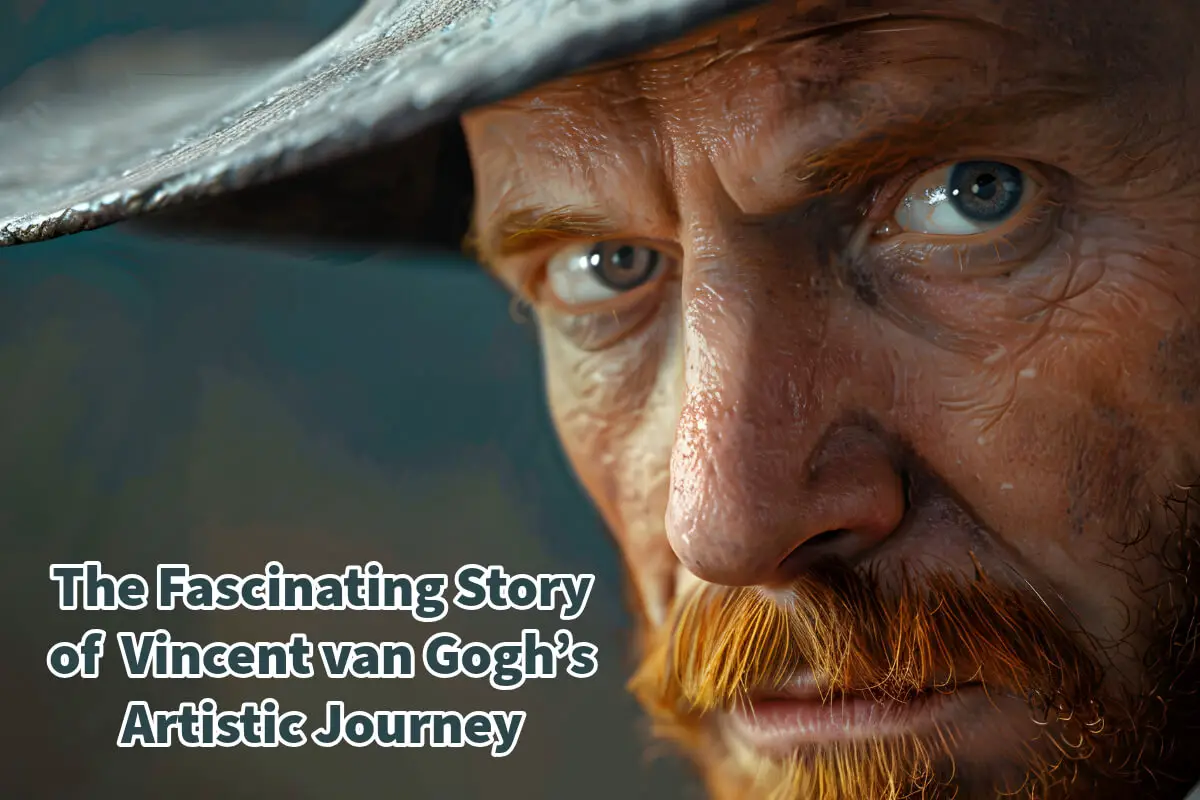Vincent van Gogh, one of the most iconic figures in the art world, is celebrated not only for his vibrant and emotive paintings but also for the story of his tumultuous life. He is by far one of my favorite artists.
Van Gogh’s journey from obscurity to posthumous fame is a tale of resilience, passion, and the ceaseless pursuit of artistic expression despite profound personal challenges. His legacy is not just defined by his extraordinary body of work but also by his determination to create despite battling severe mental health issues. We will delve into Van Gogh’s life, his unique artistic approach, and why he continues to inspire millions worldwide as both a misunderstood genius and a relentless artist.
Table of Contents
- Early Life: Foundations of a Troubled Soul
- Van Gogh: Turning to Art His Path to Salvation
- Arles: The Peak of Creativity and Descent into Madness
- Van Gogh’s Struggle with Mental Health
- The Tragic End and Posthumous Recognition
- Van Gogh’s Artistic Legacy
- Related Questions
Early Life: Foundations of a Troubled Soul
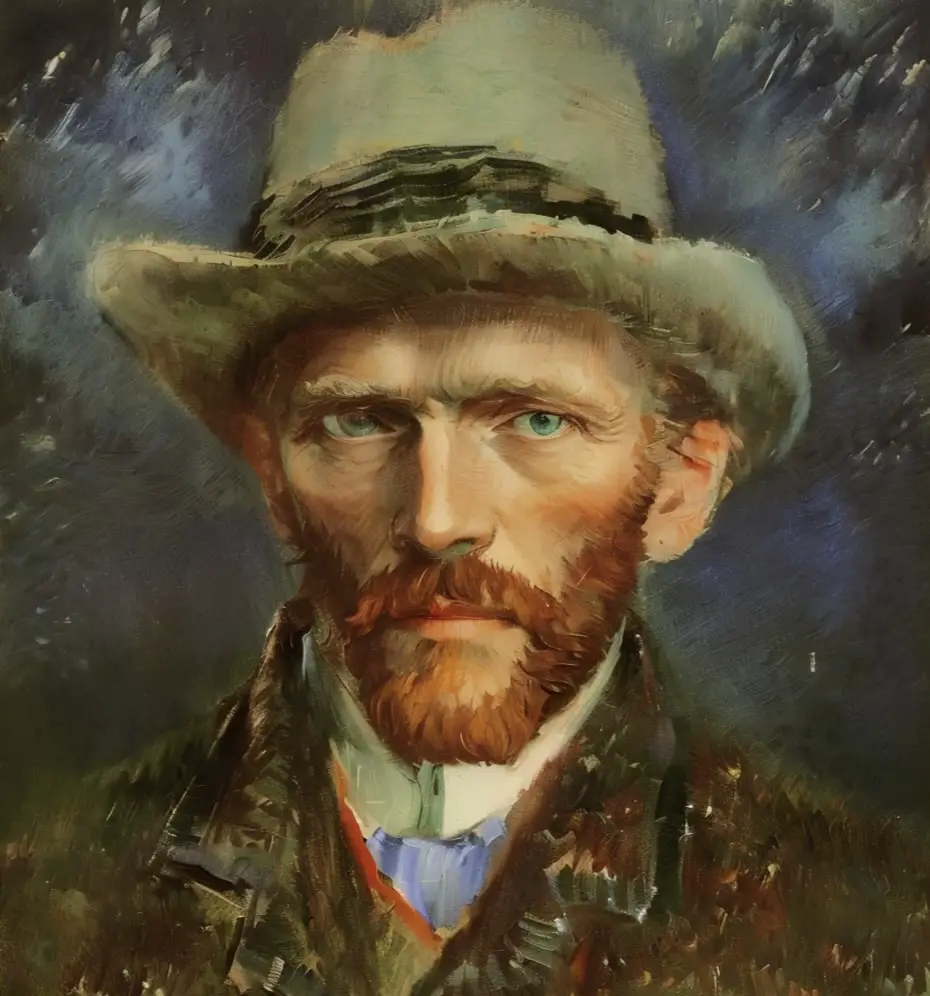
Vincent van Gogh was born on March 30, 1853, in Groot-Zundert, a small town in the Netherlands. The son of a Protestant pastor, Van Gogh, was raised in a strict religious household, which later influenced the themes of suffering and redemption that permeated his art.
As a child, Vincent was sensitive and introverted, traits that remained with him throughout his life.
Early Career Struggles
Van Gogh’s early career was marked by instability and uncertainty. He initially worked as an art dealer, but his job was short-lived due to his lack of interest in commercial success and conflicts with his employer.
This was followed by brief stints as a schoolteacher and a missionary in Belgium’s coal-mining district. During this period, marked by poverty and deep empathy for the working poor, Van Gogh began to draw regularly.
His sketches depicted miners and laborers, reflecting his compassion for the downtrodden and sowing the seeds for his later works that celebrated the dignity of ordinary people.
The Influence of Religion and Personal Turmoil
Van Gogh’s religious zeal drove him to pursue a career as a missionary, but his unorthodox approach and extreme lifestyle alienated him from the church authorities. This began a series of failures and rejections that would plague him throughout his life, amplifying feelings of inadequacy and loneliness.
However, these experiences deepened his empathy and influenced the emotionally charged and spiritually introspective themes seen in his later works.
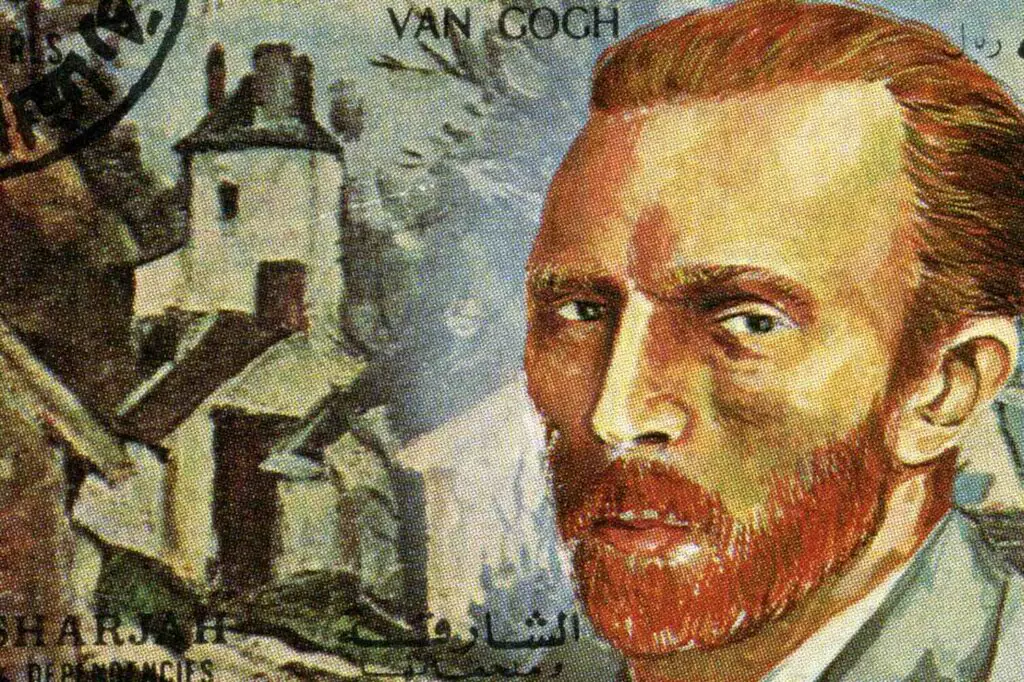
Van Gogh: Turning to Art His Path to Salvation
It was only in his late 20s that Van Gogh decided to dedicate himself fully to art. Encouraged by his younger brother, Theo, who was a significant source of emotional and financial support, Van Gogh began his journey as an artist.
Theo, who worked as an art dealer in Paris, recognized Vincent’s raw talent and encouraged and provided him with the resources needed to hone his skills.
The Early Works: A Study in Realism
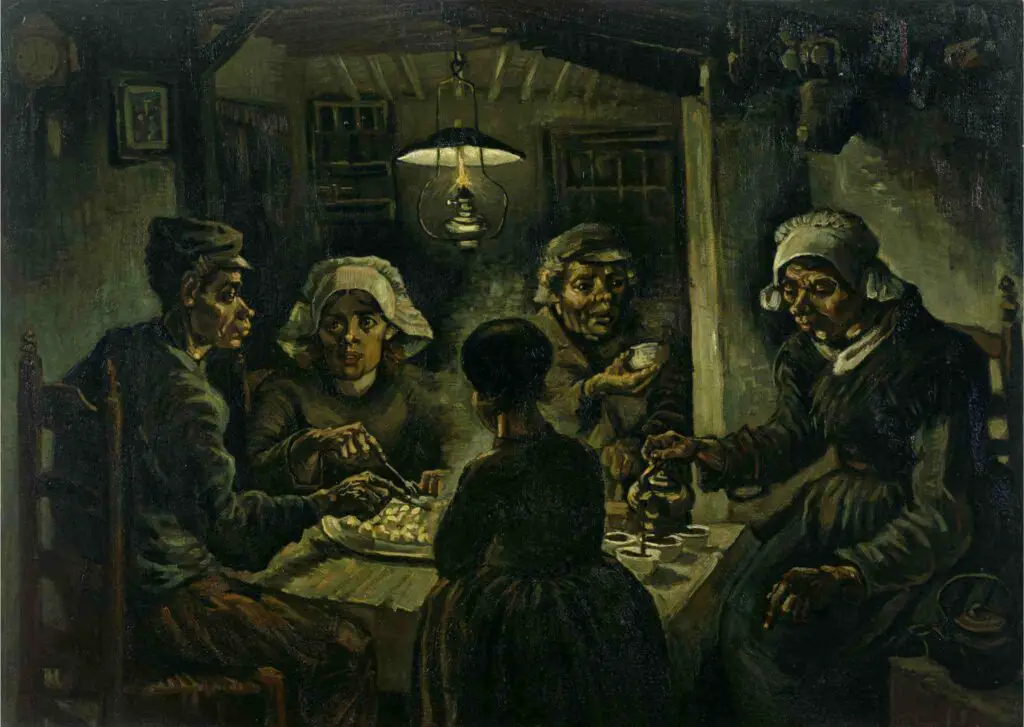
Van Gogh’s early work was characterized by dark tones and somber themes, influenced by Dutch masters such as Rembrandt and the Hague School artists. His first significant work, The Potato Eaters (1885), showcased his deep concern for the working class.
The painting, which depicts a group of peasants sharing a humble meal, highlights Van Gogh’s ability to capture raw human emotion and social reality. Though it received mixed reviews at the time, it demonstrated Van Gogh’s commitment to depicting life as he saw it—unvarnished and poignant.
The Move to Paris and Embracing Color
In 1886, Van Gogh moved to Paris to live with Theo. The city was a cultural and artistic epicenter, exposing Vincent to diverse influences, including the works of Impressionist and Post-Impressionist painters like Claude Monet, Paul Gauguin, and Georges Seurat.
This exposure led to a dramatic shift in Van Gogh’s palette and technique. Gone were the dark, earthy tones; brighter colors and more energetic brushstrokes replaced them.
In Paris, he experimented with various styles, incorporating elements of Japanese woodblock prints that emphasized bold outlines and flat areas of color. This period was crucial for Van Gogh as he began to forge his distinctive style, blending his keen eye for human emotion with vivid, dynamic color schemes that would later define his most famous works.
Arles: The Peak of Creativity and Descent into Madness
In 1888, Van Gogh left Paris and moved to the small town of Arles in southern France. He sought solace in the idyllic countryside, believing that a simpler life would bring him peace and inspiration. The move marked the beginning of the most prolific phase of his career, but it also set the stage for his descent into mental instability.
The Studio of the South
Van Gogh envisioned Arles as a haven where artists could gather and collaborate. He famously invited Paul Gauguin to join him, hoping to establish a community of like-minded artists.
While their initial partnership was productive, it quickly devolved into conflict. The clash of their strong personalities and artistic differences led to heated arguments, culminating in the infamous incident in which Van Gogh, in a fit of mental anguish, severed part of his ear.
This event not only strained their friendship but also marked a significant turning point in Van Gogh’s mental health.
Masterpieces Born from Turmoil
Despite—or perhaps because of—his declining mental state, Van Gogh’s time in Arles produced some of his most celebrated works. Sunflowers (1888) and The Bedroom (1889) exemplified his use of vibrant yellows and expressive, swirling brushstrokes. His landscapes, such as The Starry Night (1889), which he painted during his stay at the asylum of Saint-Paul-de-Mausole in Saint-Rémy-de-Provence, captured the intensity of his emotions and his perception of the world around him.
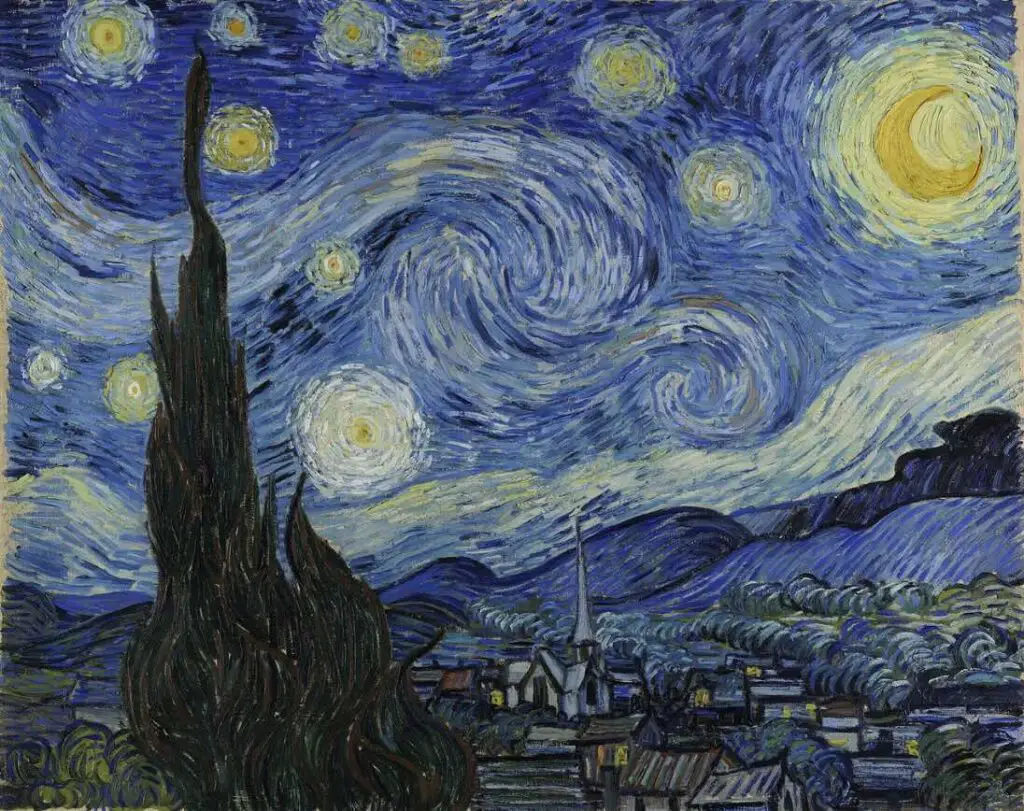
One of his most iconic paintings, The Starry Night, is particularly notable for its swirling patterns of light and shadow that convey both the beauty and chaos of the night sky. It is said to reflect Van Gogh’s inner turmoil, showcasing his ability to channel his suffering into breathtaking art.
Van Gogh’s Struggle with Mental Health
Van Gogh’s battle with mental illness was a defining aspect of his life and art. Diagnosed retrospectively by scholars with conditions ranging from bipolar disorder to epilepsy, his suffering was evident in both his behavior and his work.
Episodes of intense depression were punctuated by moments of frenetic creativity, during which he would produce multiple paintings in rapid succession.
The Role of Art as Therapy
For Van Gogh, art was a passion and a form of therapy. He asked Theo, “What would life be without courage to attempt anything?”
This sentiment encapsulated his belief that art was a way to confront and express the complex emotions that plagued him. Even during his stays in mental health facilities, he continued to create, producing works that reflected both the serenity he sought and the anguish he endured.
Letters to Theo: A Window into His Soul
Vincent’s letters to his brother Theo provide an intimate look into his thoughts and struggles. These correspondences reveal the depth of his self-doubt and yearning for recognition.

Despite his lack of critical and financial success during his lifetime—he is recorded as having sold only one painting, The Red Vineyard, before his death—his letters show that his drive to create came from a sincere passion for art and beauty.
The Tragic End and Posthumous Recognition
On July 27, 1890, Van Gogh shot himself in the chest and died two days later at the age of 37. His death marked the end of a life filled with relentless creative output overshadowed by profound suffering.
Theo, who had been Vincent’s most steadfast supporter, died just six months later in what many feel was his inability to cope with the loss of his brother.
The Impact of Theo’s Support

Theo’s role in Van Gogh’s life cannot be overstated. Not only did he provide financial and emotional support, but he also preserved Vincent’s works and letters, ensuring that his legacy would endure.
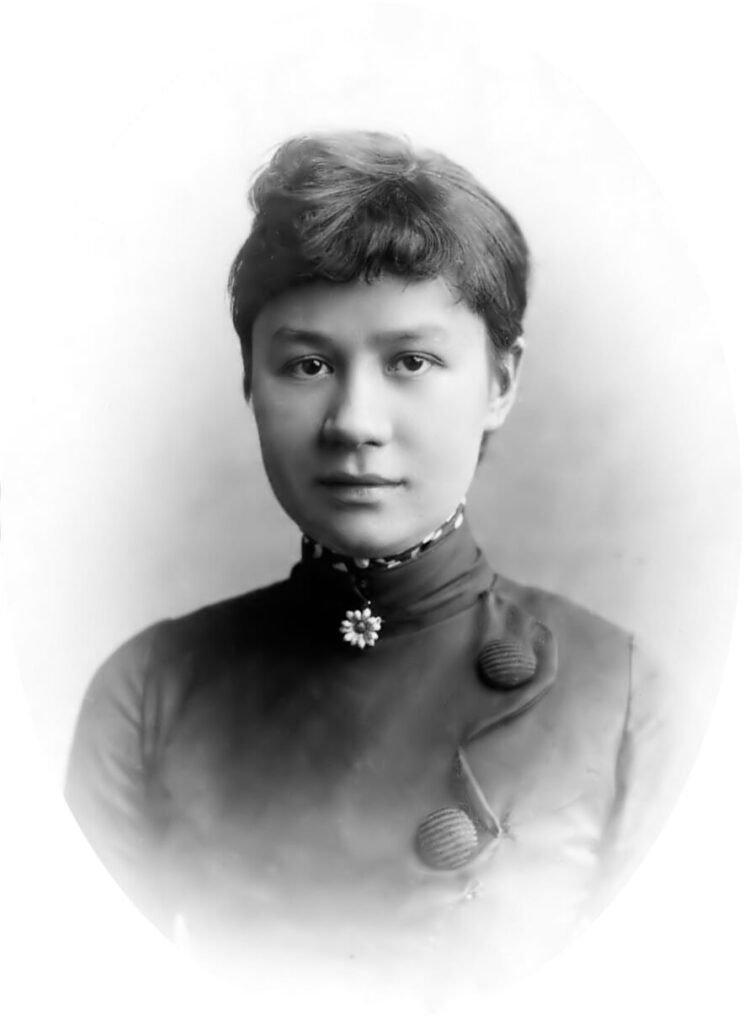
After Theo’s death, his widow, Johanna van Gogh-Bonger, played a crucial role in promoting Van Gogh’s art, organizing exhibitions, and publishing letters between the brothers. Her efforts were instrumental in securing Vincent’s place in the art world.
The Journey to Fame
It wasn’t until the early 20th century, years after Van Gogh’s death, that his work began to gain the recognition it deserved. With the help of Johanna Van Gogh-Bonger., Exhibitions in Paris and beyond sparked a renewed interest in his art, and he quickly became seen as a pioneering figure of modern art.
Van Gogh’s expressive style influenced subsequent generations of artists, including the Fauves and the German Expressionists, who admired his fearless use of color and emotive brushwork.
Van Gogh’s Artistic Legacy
Today, Van Gogh is remembered as one of the greatest artists in history. His paintings, characterized by bold colors, dynamic forms, and emotive depth, are celebrated in museums and galleries worldwide. But beyond his contributions to the art world, Van Gogh’s story is one of unyielding passion and resilience.
A Symbol of Perseverance
Van Gogh’s life is a powerful reminder that success is not always measured in one’s lifetime. His struggles resonate with people who face their battles, making him not just a beloved artist but an enduring symbol of perseverance and the transformative power of art.
Continuing Influence Of Vincent Van Gogh
Van Gogh’s influence can be seen in contemporary art, literature, and popular culture. Movies have been made about him and his life.

The Van Gogh Museum in Amsterdam continues to be one of Europe’s most popular and most visited museums. The fact that so many flock to see his works of art and that the museum is in the top 25 of the most visited museums in the world is a testament to how popular Vincent Van Gogh, his story, legacy, and art continue to be today.
All of this from a man who sold few paintings during his lifetime tells a story of resilience that we can all learn from. This is why Vincent Van Gogh’s artistic journey is fascinating.
Anita Louise Art is dedicated to art education, great artists, and inspiring others to find and create their art. We love art that uplifts and inspires. #ArtToMakeYouSmile! #ArtToMakeYouHappy!
If you want to see any of my art, you can find out more by clicking here. If you are interested in what inspires me and my paintings, you can discover more by clicking here.
We have a free newsletter and would love you to be part of our community; you can subscribe to the newsletter by clicking here. If you have any questions, I would be happy to talk to you anytime. You can reach me, Anita, by clicking here.
Subscribe to our Anita Louise Art YouTube Channel with great videos and information by clicking here.
Join us for our podcast “5 Minutes With Art.” Spend just 5 minutes a week with us to discover and learn about great art and artists. You can find out more about our podcast by clicking here.
Related Questions
How Much Is Van Gogh’s Starry Night Worth?, And Other Facts
Van Gogh used color, form, and emotions in his art. He had a bright palette that was individualized for his time. Even though he did not see a lot of success during his life after he died, the impact of his art can be seen in both the Expressionism and Fauvism movements that were taking place in Europe.
By clicking here, you can learn more by reading How Much Is Van Gogh’s Starry Night Worth?, And Other Facts.
Why Is Van Gogh Considered Such a Great Artist?
Vincent Van Gogh’s Starry Night painting is considered priceless; many have estimated that the price is worth well over 100 million US dollars. The Museum of Modern Art in New York City has had the painting in its collection since 1941.
By clicking here, you can discover more by reading Why Is Van Gogh Considered Such a Great Artist?
Vincent Van Gogh, The Sowers – 1888
Vincent Van Gogh’s “The Sower,” created during the autumn of 1888, stands as a captivating masterpiece that provides insight into the artist’s enduring fascination with the subject of sowers. This iconic artwork transcends the mere portrayal of a rural scene, profoundly exploring emotion, imagination, and the transformative potency of color.
By clicking here, you can learn more by reading Vincent Van Gogh, The Sowers – 1888.

